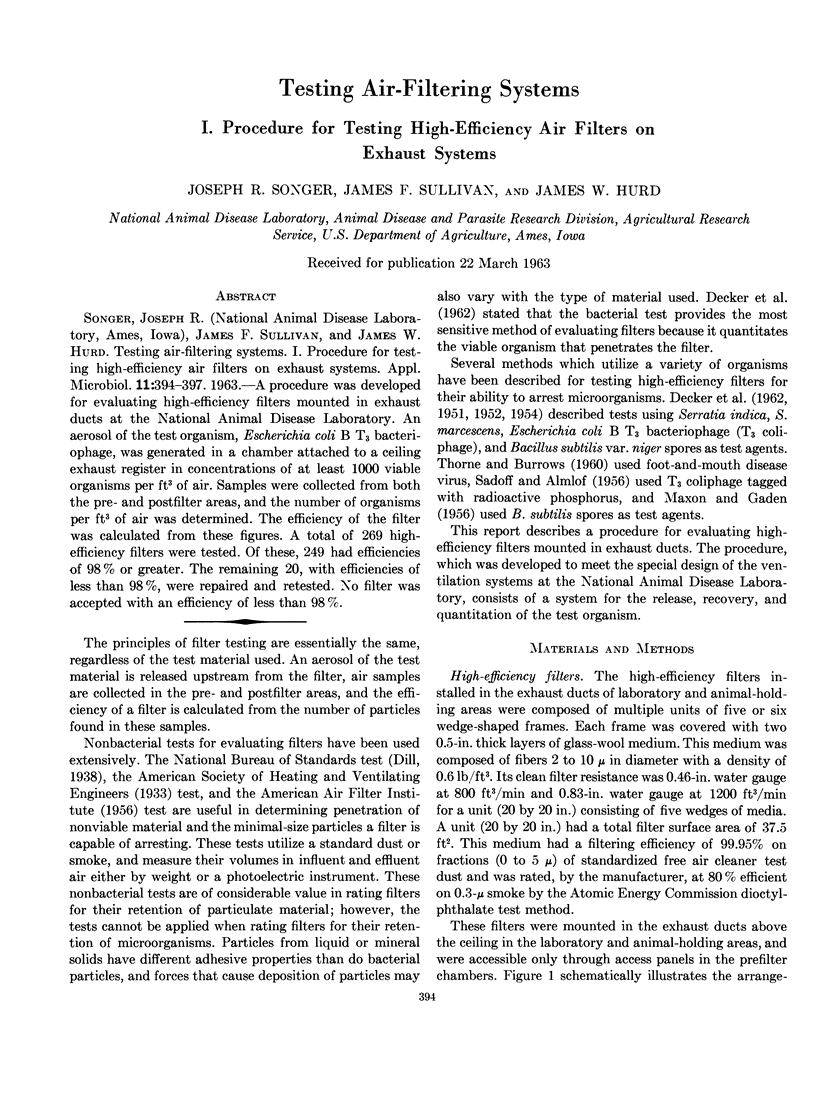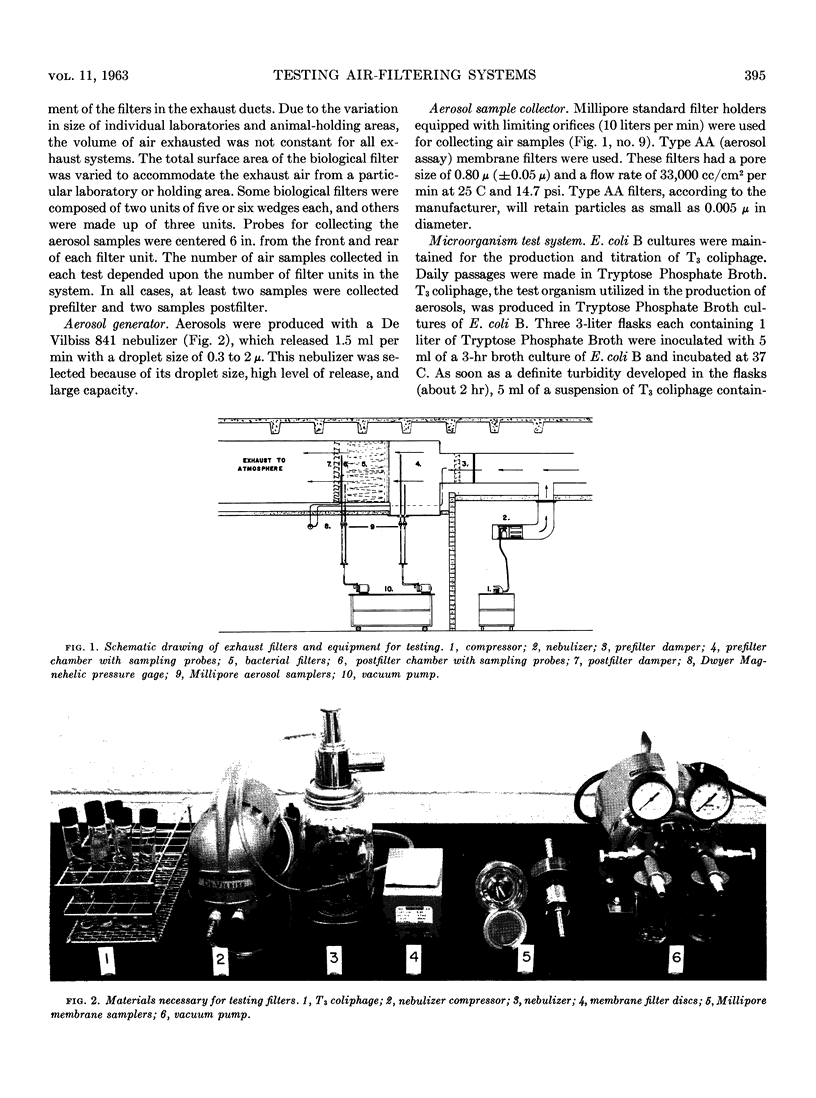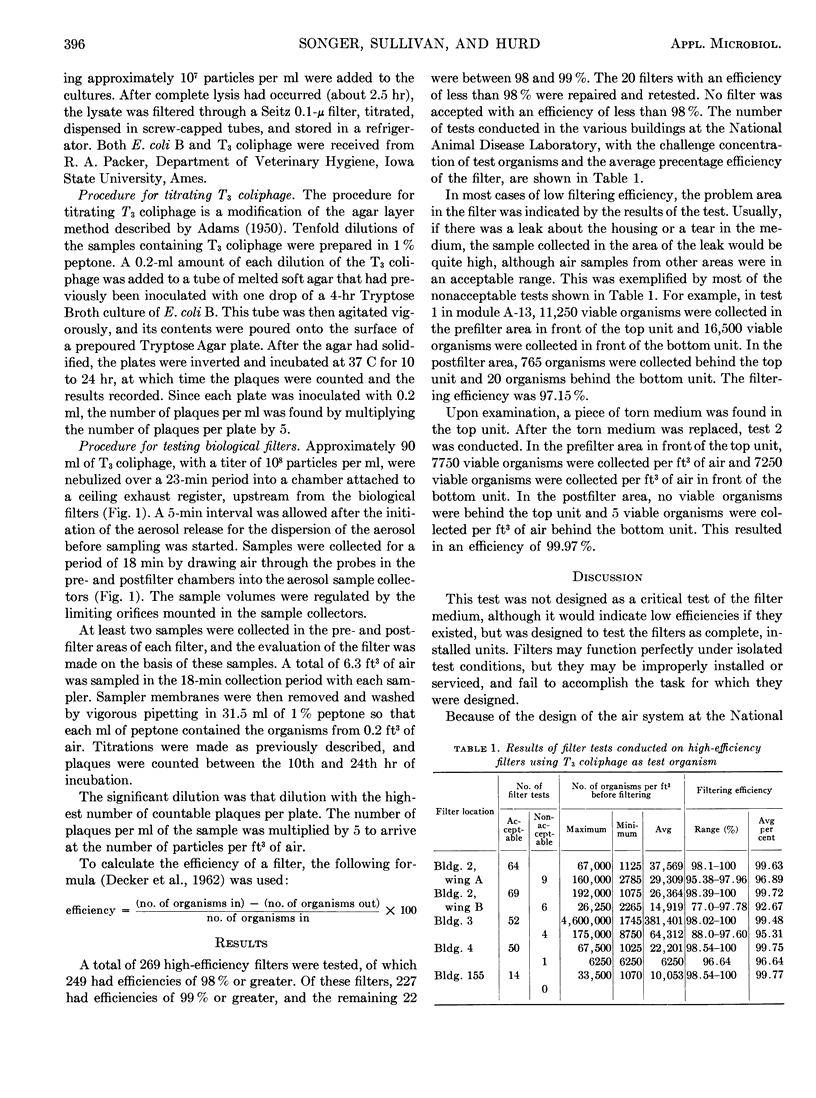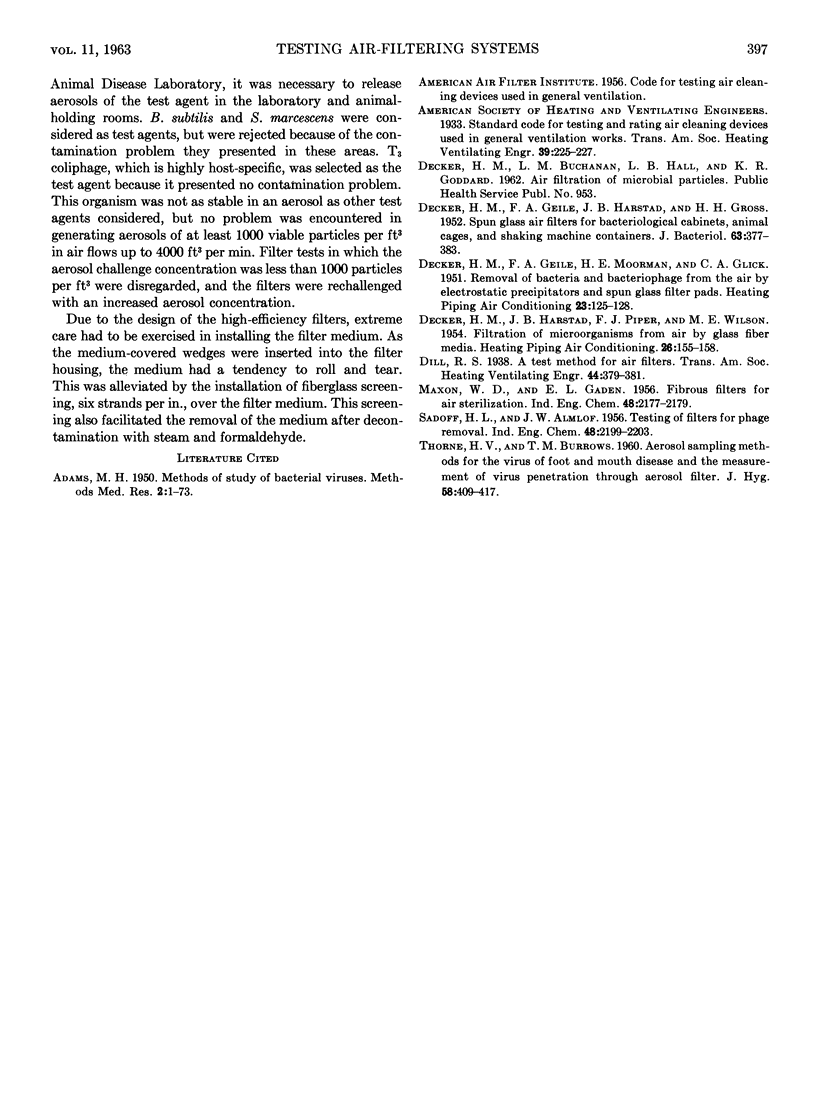Abstract
A procedure was developed for evaluating high-efficiency filters mounted in exhaust ducts at the National Animal Disease Laboratory. An aerosol of the test organism, Escherichia coli B T3 bacteriophage, was generated in a chamber attached to a ceiling exhaust register in concentrations of at least 1000 viable organisms per ft3 of air. Samples were collected from both the pre- and postfilter areas, and the number of organisms per ft3 of air was determined. The efficiency of the filter was calculated from these figures. A total of 269 high-efficiency filters were tested. Of these, 249 had efficiencies of 98% or greater. The remaining 20, with efficiencies of less than 98%, were repaired and retested. No filter was accepted with an efficiency of less than 98%.
Full text
PDF



Images in this article
Selected References
These references are in PubMed. This may not be the complete list of references from this article.
- DECKER H. M., GEILE F. A., HARSTAD J. B., GROSS N. H. Spun glass air filters for bacteriological cabinets, animal cages, and shaking machine containers. J Bacteriol. 1952 Mar;63(3):377–383. doi: 10.1128/jb.63.3.377-383.1952. [DOI] [PMC free article] [PubMed] [Google Scholar]
- THORNE H. V., BURROWS T. M. Aerosol sampling for the virus of foot-and-mouth disease and the measurement of virus penetration through aerosol filters. J Hyg (Lond) 1960 Dec;58:409–417. doi: 10.1017/s0022172400038559. [DOI] [PMC free article] [PubMed] [Google Scholar]



